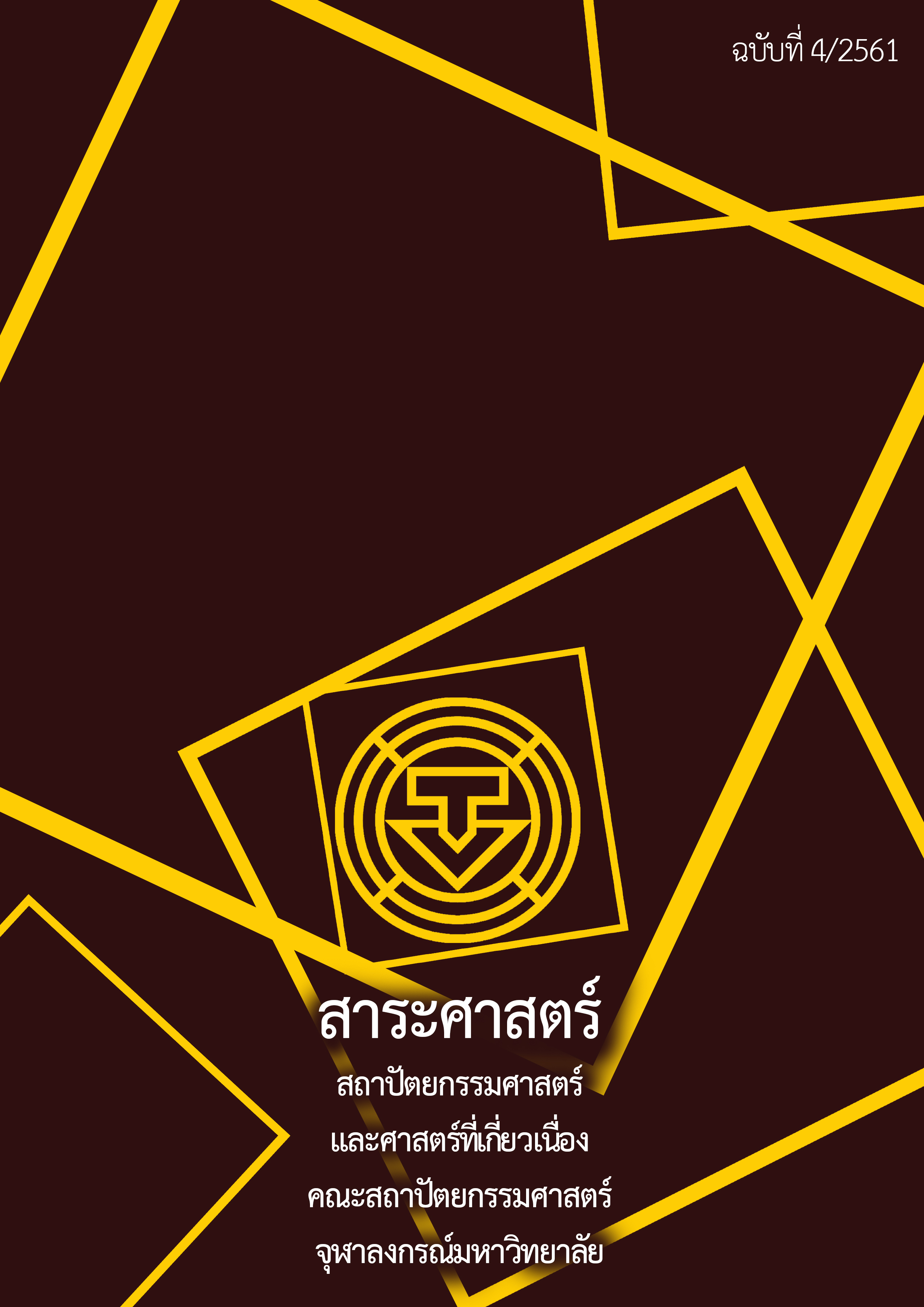The Difference Between Conventional Planning Process and Participatory Action Research Planning Process: A Case Study of Wat Saket Community, Pomprapsatrupai, Bangkok
Main Article Content
Abstract
Participatory processes are ones of the most important things for the residential development processes which help people in the communities to contribute the sustainable development for their communities involved in solving problems. The Office of the Crown Property (CPB) is the landowner who has a policy of restoring and developing the community and housing in the old communities by selecting the leading communities as good examples in development through participatory actions. The selected community in the case study is Wat Saket Community Pomprapsattruphai, Bangkok. The objectives of this case study are as follows:
1) To study the planning process for residential improvement (CP) and participatory action research (PARP).
2) To study the results of the CP and the PARP models based on learning to compare the differences between the two processes; this study has the time for the researches in total of 7 months with 7 processes.
The results show that 1) the effects of the demand for housing improvement through the PARP process are different as follows:
From the original building renovation and drainage system in the community after implementing the PARP process, there is the improvement in the community development plan; both physical and social and economic which have led the community to learn and to motivate people to tackle the problems of the community. 2) The differences between the CP process and the PARP process is that the PARP model reduces the role of outsiders (developers, landowners, and related sectors) to support for information and operations. Also, they help increase the roles of an individual (the community's members) to become a thinker and become the power to drive the development for their community. This is the beginning of the community development with the combination of the group to establish a cooperative and jointly help one another design a self-contained community plan for further development in the future.
In conclusion, the participatory action research has brought physical, social and economic changes to the sampling community which is an important tool of encouraging community development and self-sustainability. However, this operation takes time and needs a lot of collaboration from many parties. Therefore, CPB should consider using an important tool to improve the community in the future continuously.
Article Details
References
โกวิทย์ พวงงามและชอบ เข็มกลัด. วิจัยปฏิบัติการอย่างมีส่วนร่วมเชิงประยุกต์. กรุงเทพมหานคร: สำนักพิมพ์เสมาธรรม, 2547.
ธีรวุฒิ เอกะกุล. ระเบียบวิธีวิจัยทางพฤติกรรมศาสตร์และสังคมศาสตร์. อุบลราชธานี: สถาบันราชภัฎอุบลราชธานี, 2542.
ปรางโชสุก สุพรรณนานา. “กระบวนการการจัดทำรายละเอียดโครงการและบริหารจัดการโครงการศูนย์ชุมชนแบบมีส่วนร่วมอย่างยั่งยืน บึงพระราม 9.” วิทยานิพนธ์ปริญญามหาบัณฑิต ภาควิชาเคหการ คณะสถาปัตยกรรมศาสตร์ จุฬาลงกรณ์มหาวิทยาลัย, 2554.
พฤทธิ์ ศิริบรรณพิทักษ์. การจัดการศึกษาเพื่อการพัฒนาที่ยั่งยืน: พื้นฐานการศึกษาด้านเศรษฐกิจ สังคมและสิ่งแวดล้อม. กรุงเทพมหานคร: โรงพิมพ์ไทยสัมพันธ์, 2551.
ศศิกาญจน์ ศรีโสภณ. “การวางแผนปฏิบัติการพัฒนาที่อยู่อาศัยแบบมีส่วนร่วมชุมชนท่าน้ำสามเสน.” วิทยานิพนธ์ปริญญามหาบัณฑิต ภาควิชาเคหการ คณะสถาปัตยกรรมศาสตร์ จุฬาลงกรณ์มหาวิทยาลัย, 2548.
สุภางค์ จันทวานิช. วิธีการวิจัยเชิงคุณภาพ. พิมพ์ครั้งที่ 8. กรุงเทพมหานคร: สำนักพิมพ์แห่งจุฬาลงกรณ์มหาวิทยาลัย, 2542.
สํานักงานทรัพย์สินส่วนพระมหากษัตริย์. “ข้อมูลรายละเอียดชุมชนสระเกศ.” กรุงเทพฯ: กองโครงการชุมชน 2 ฝ่ายโครงการพิเศษ สํานักงานทรัพย์สินส่วนพระมหากษัตริย์, 2556.
อรัญ จิตตะเสโนและคณะ. หลักการและวิธีการบริการจัดการชุมชน. สงขลา: คณะทำงานจัดการองค์ความรู้ในโครงการวิจัยและพัฒนาตามปรัชญาเศรษฐกิจพอเพียงสู่สุขภาวะองค์รวม, 2554.
Nabeel, Hamdi and Reinhard Goethert. Action Planning for Cities: A Guide to Community Practice.
Chichester: John Wiley & Sons, 1997.


